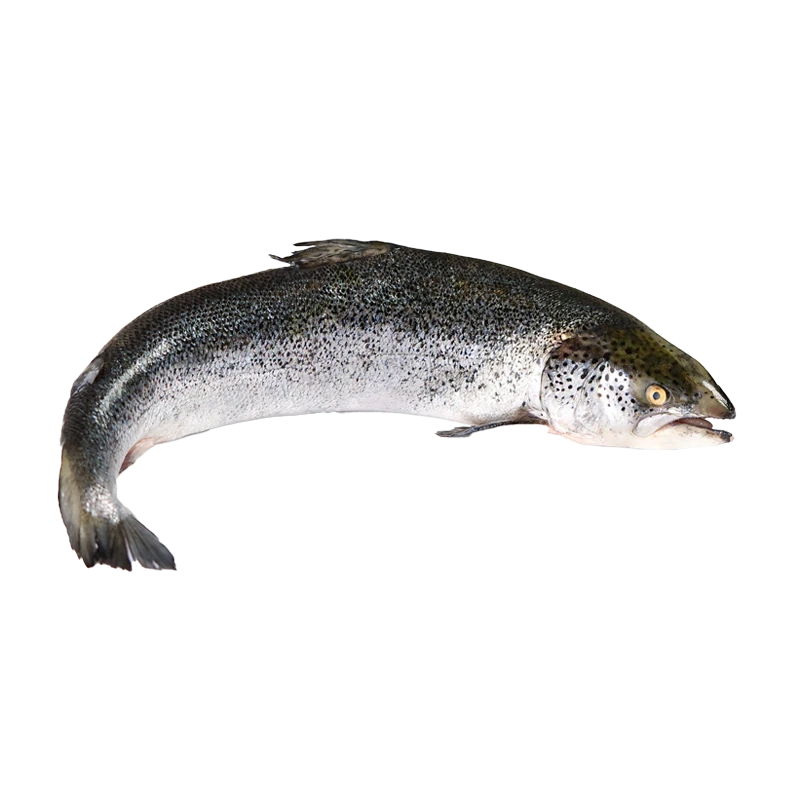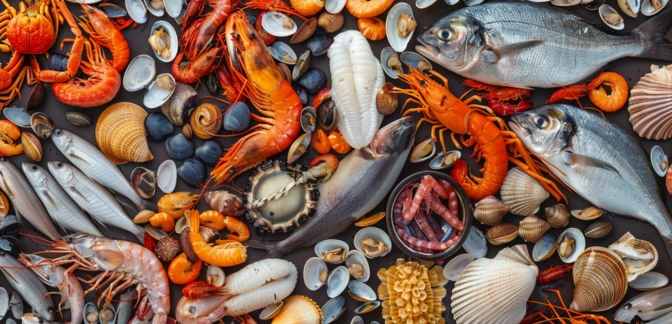Salmon — Nutrients, Health Benefits, And Shopping Tips

Written by Listonic Team
Last update on September 6, 2024
Salmon nutrients
Nutrition facts
Amount per 100 g
Calories
🔥 208 kcal
| Nutrition per: 100 g | Value | % Daily Value* |
|---|---|---|
| Carbs | 0 g | - |
| Fiber | 0 g | - |
| Sugars | 0 g | - |
| Glycemic Index | 0 | - |
| Protein | 20 g | 40% |
| Sodium | 59 mg | 2.57% |
| Total Fat | 13 g | 16.67% |
*The % of Daily Value (DV) tells you how much a nutrient in a serving of food contributes to a daily diet. 2,000 calories a day is used for general nutrition advice.
20 g
🧀 Good Protein Content
Salmon facts & tips
Health benefits
- High in protein, essential for muscle growth, repair, and overall body function.
- Rich in omega-3 fatty acids, which support heart health, reduce inflammation, and improve brain function.
- Contains essential vitamins and minerals such as Vitamin B12, Vitamin D, selenium, and potassium, which support overall health and well-being.
- Supports heart health by helping to lower cholesterol levels and blood pressure.
- Promotes skin health due to its high content of healthy fats and antioxidants.
Health risks
- Potential for contamination with harmful substances such as mercury, PCBs, or dioxins, particularly in farmed or improperly sourced salmon, which can pose health risks when consumed frequently.
- Risk of allergic reactions in individuals with fish allergies, causing symptoms like itching, swelling, or anaphylaxis.
- High calorie content particularly in salmon prepared with added fats like butter or oil, which can contribute to weight gain if consumed frequently.
- Potential for overfishing concerns related to the sustainability of wild salmon populations and the impact of farming practices on the environment.
How to choose salmon
Salmon should have a bright, consistent pink-orange color and a clean, sea-fresh scent. The flesh should be firm to the touch, and spring back quickly when pressed.
Do not choose salmon with a fishy odor or that has a slimy surface, as these are signs of aging or poor handling. Salmon that appears faded or has any discolored patches should also be avoided, as it may not provide the best flavor or texture.

How to store salmon
Fresh salmon should be stored in the refrigerator, preferably in an airtight container on a bed of ice. Keeping it chilled helps maintain its freshness and flavor for up to two days. For longer storage, freezing is recommended.
Exposure to air can cause salmon to spoil quickly. Avoid leaving it at room temperature for extended periods, as this can lead to bacterial growth. Always thaw frozen salmon in the refrigerator and use it promptly to ensure the best quality and safety.
✅ Extra Tip
How long does it last?
Salmon can last for 1-2 days in the refrigerator. For longer storage, salmon can be frozen for up to 6-9 months.
What to do with leftovers?
Leftover salmon can be used in a variety of savory dishes. Flake it and add to salads, sandwiches, or wraps for a flavorful protein, or mix it into a pasta dish with a creamy or tomato-based sauce. Salmon is also great when used in fish tacos with fresh salsa, avocado, and a squeeze of lime.
Use leftover salmon in a quiche or frittata with eggs, cheese, and herbs, or mix it into a rice bowl with vegetables and a tangy dressing. If you have a lot of salmon, consider making a batch of salmon patties by mixing the flaked fish with breadcrumbs, eggs, and seasonings, then frying until golden. Salmon can also be added to a seafood chowder with potatoes and corn, or used as a topping for pizzas or flatbreads. For a quick snack, serve salmon with crackers and cream cheese, or mix it into a salad with greens and a citrus vinaigrette.
👨⚕️️ Medical disclaimer
Discover products from other categories
Listonic Team
Fact-checked
Our editorial team checked this article to make sure it was accurate at the time of publishing it.
Get the top-rated shopping list app on your phone!







